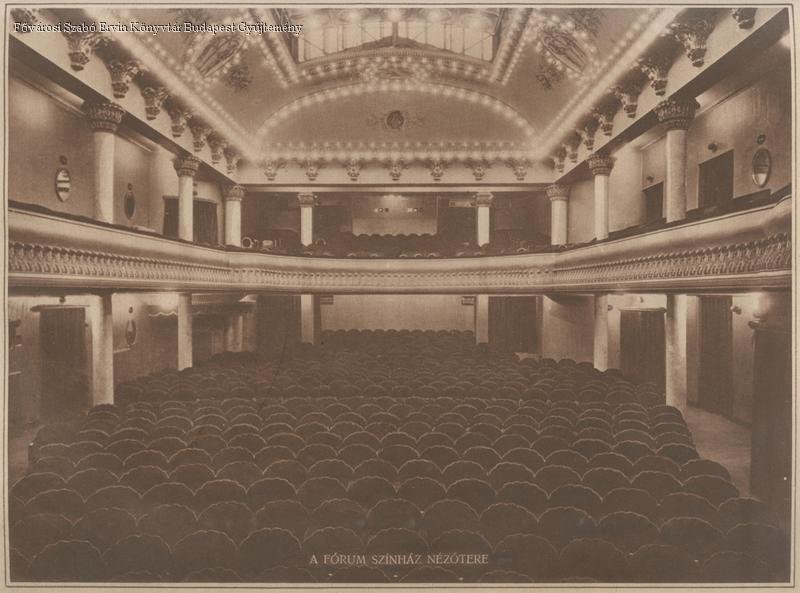One of Budapest's most prestigious cinemas announced in bold letters 95 years ago that, after London, it was going to be the first on the continent to show a talking film at the Fórum in Budapest. The Fórum was opened in 1926 in the inner city Kossuth Lajos Street, in the building of today's Puskin cinema, which was one of the most prestigious cinemas in Budapest, and of course, only silent films were played at the time of its opening. The sound film was released in America only one year later, in 1927, only to become dominant within a few years.
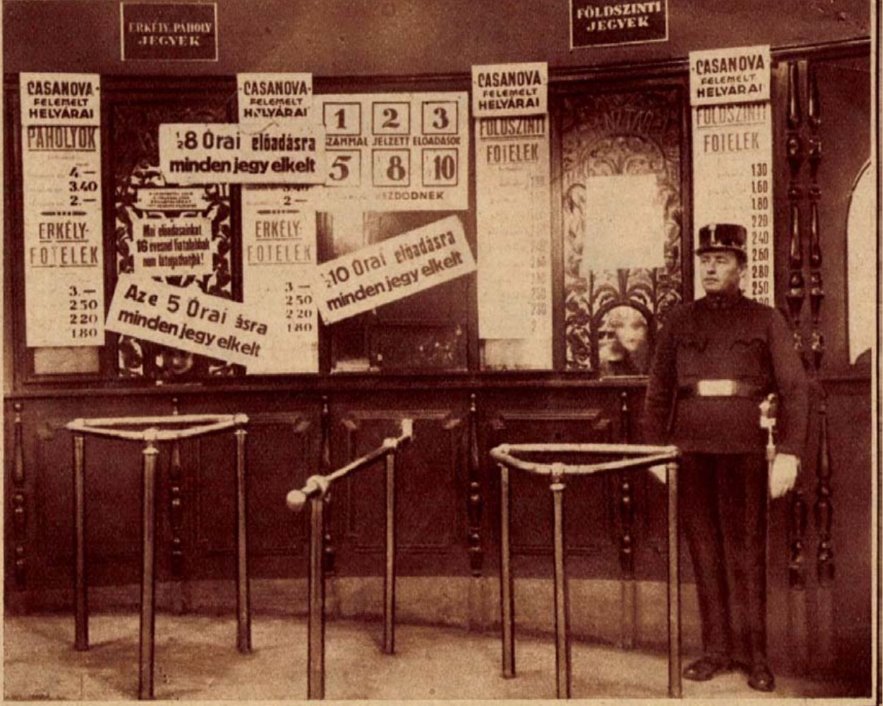
The box office of the Fórum cinema at the screening of the film Casanova in 1927 (Photo: Tolnai Világlapja, 2 November 1927)
At the opening of the Fórum cinema, it could accommodate 850 people and accompanied silent films with its own orchestra. However, the cinema had to be rebuilt not long after, due to minor problems, such as the need to enlarge its cloakroom. Due to the reconstruction, the auditorium became smaller, but it could still accommodate 780 spectators. However, the cinema remained impressive, as its design and equipment were the most modern in the country. This position was strengthened by the fact that the Fórum played a pioneering role in the spread of sound film.
The recording of sound and motion pictures is also an invention of the 19th century, but they could not be connected for a long time, which had technical reasons, because if separate equipment played the recorded picture and the sound, then it was practically unsolvable that the two would stay in sync even for a short film. After a lot of experimentation and unique ideas, they finally managed to solve the issue.
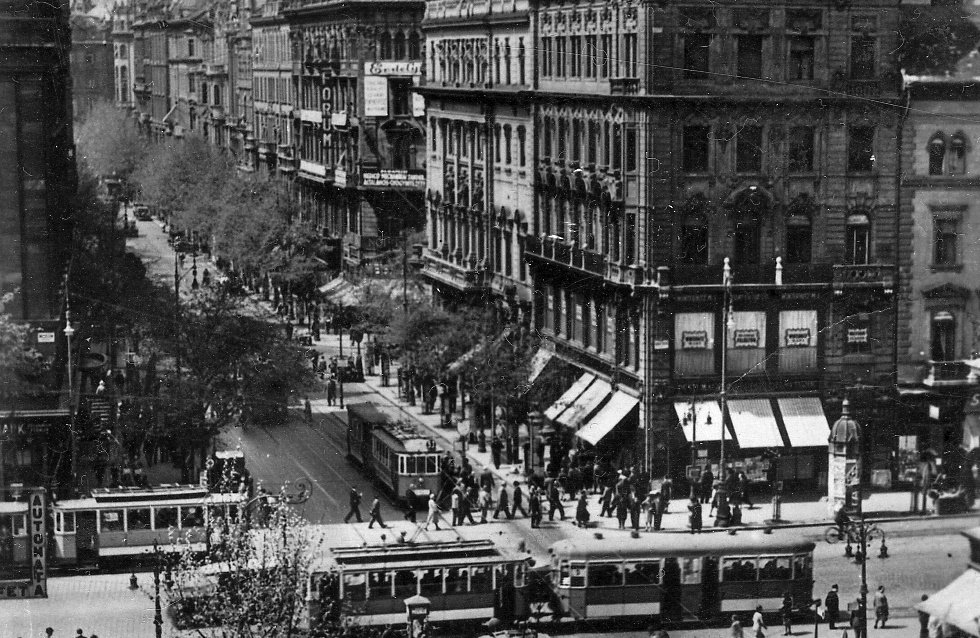
The Fórum cinema in 1935 (Photo: Fortepan/No.: 32584)
Not long after the first American sound film presentation in 1927, the Fórum cinema introduced the Hungarian audience to the talking film, as the viewers of the Fórum could already enjoy this technical miracle on 9 February 1928. In the 9 February 1928 edition of Magyar Hírlap, the following was written about the cinema program:
"FÓRUM (IV., 18 Kossuth Lajos Street, Telephone: T. 274-37 and 274-38). Hungarian and Gaumont news. — Two burlesques. — Singing, music playing, talking phonofilm. (Performances start on weekdays: at 5, quarter past 7 and half past 9, on Sundays and public holidays: at 4, 6, 8 and 10)"
Of course, the cinema separately advertised the outstanding event in Hungarian cinema history, which was also important for the recently reopened cinema, because according to contemporary evaluations, the 1927-1928 season did not really bring outstanding works to domestic cinemas, at least until the beginning of 1928. That is why everyone was looking forward to the premiere of the Fórum, where a sound film based on Lee de Forest's patent was shown.
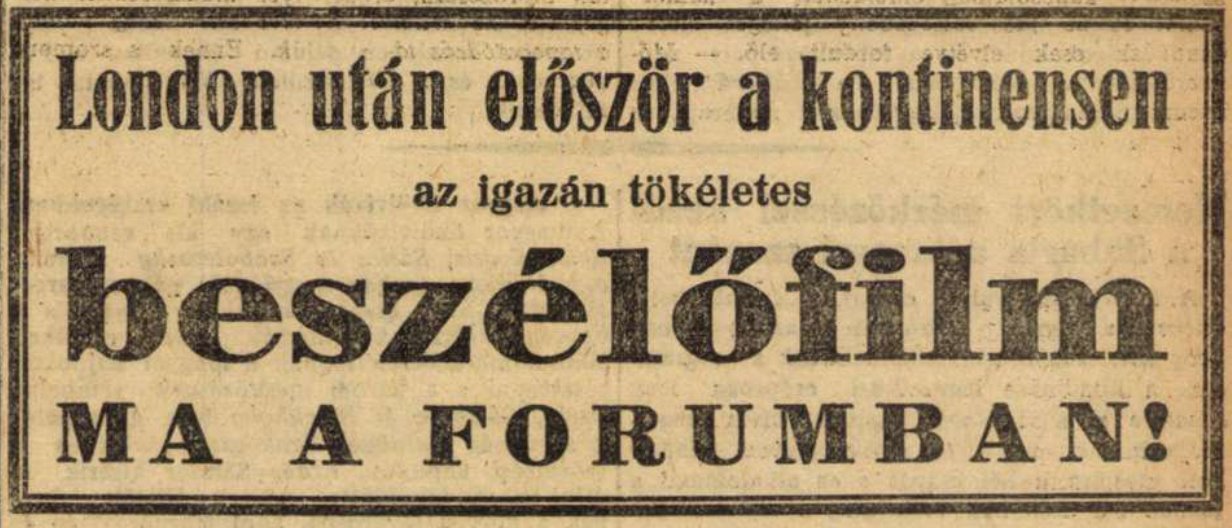
Advertisement of the performance (Magyar Hirlap, 9 February 1928)
Actually, what did the audience see and hear when they bought tickets for the talking film? We should not imagine a traditional film with some action, but tableaus. On 10 February 1928, after the screening, Magyar Hírlap wrote the following about the film:
"We not only see but also hear the traffic on the streets of New York in Forest's film, we hear the aeroplane buzzing, the pigs grunting, the geese clucking and the cows mooing. And we hear everything, the various orchestras and each of their instruments, the singer of the Metropolitan Opera, the violin teacher, Mussolini, Coolidge, Lindbergh, the crowd noise of a New York public meeting, the dance steps of a ballet and so on."
This was a kind of technical presentation since full-length sound films were not made anywhere at that time, the first full-length sound film was Lights of New York, presented in July 1928. According to the newspaper, the audience did not miss that they were not seeing a complete story, they were enchanted by the sound film, and the individual scenes were received with bursts of applause and enthusiasm. In the meantime, the other cinemas played traditional films, as did the Fórum cinema for the next year and a half, as it was a long road before sound film became the absolute ruler. For the complete change, not only the way of making films had to be transformed to record sound, but also the cinemas, since they had to be equipped with completely new and quite expensive equipment. On the other hand, bands became redundant in cinemas, so this technological revolution definitely overturned the previous situation and affected all players in the industry.
The Fórum in Hungary continued to be at the forefront of the transition, and a year and a half later it already presented a full-length sound film. It is true, that premiere almost failed, because technical and legal problems arose as the Siemens-Halske company was in a legal battle with the American company Western Electric, because according to the Germans, the Western Electric's equipment contained parts that the American company used illegally. Although the trial was held at an international level, it almost prevented the premiere of the first Hungarian sound film, because the Hungarian authorities seized the film to be shown.
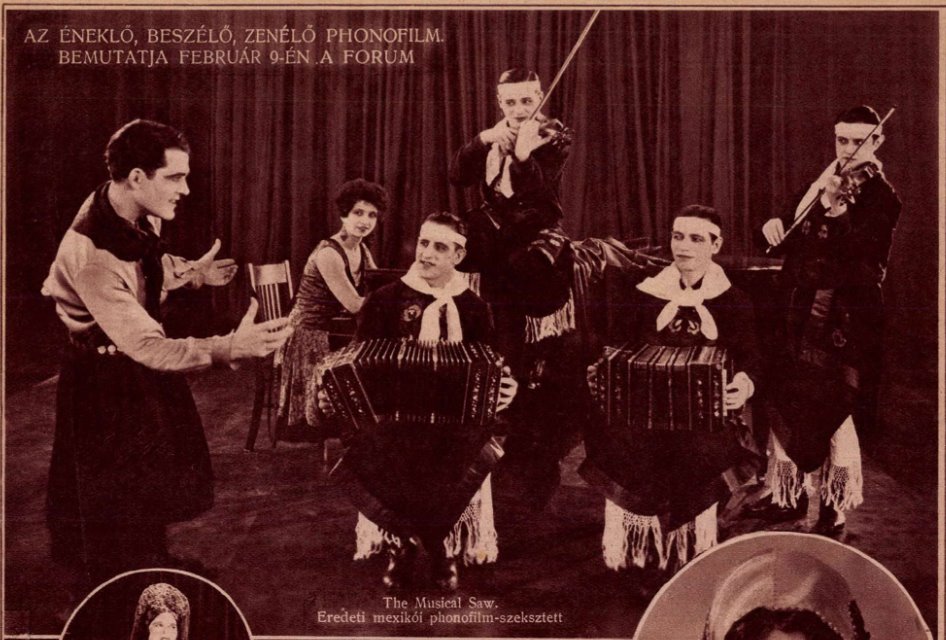
Excerpt from the first talking film (Pesti Napló Képes Műmelléklet, 29 January 1928)
It was also a problem that it turned out that the playback equipment was working very loudly, clicking and buzzing. Finally, János Molnár, a specialist who also played a key role in the start of domestic radio broadcasting, was asked to remedy the problem, and he quickly found the fault in a bad wire connection.
There were no such problems at the premiere of the first talking film in 1928, but probably the amazed audience would not have been bothered by the louder buzzing of the projector when they could hear such wonders as the cackling of geese.
Cover photo: The auditorium of the Fórum Film Theatre in a photo published in the 11 September 1927 issue of the Pesti Napló (Photo: FSZEK Budapest Collection)

